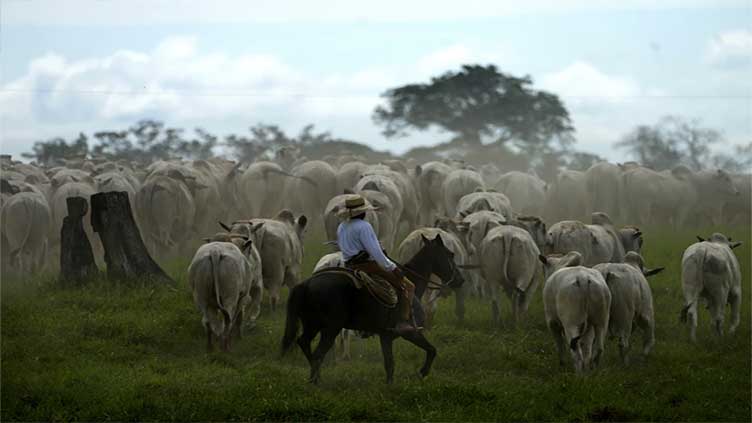Poverty is killing the Amazon rainforest. Treating soil and farmers better can help save what's left

World
Poverty is killing the Amazon rainforest. Treating soil and farmers better can help save what’s left
TEKOHAW, Brazil (AP) — At dawn in this small Amazonian village in Brazil’s Para state, flocks of noisy green parrots soar overhead as children run and play between wooden homes, kicking up sandy soil — in places white and bare as a beach.
The ground reveals one of the paradoxes of the rainforest. Renowned for its beauty and biodiversity, the life-giving nutrients of the forest are mostly stored in the trees and other plants, not the soil.
When the forest is cleared — for a cattle ranch, soybean field or even a small cluster of village homes — the combination of scorching Amazonian sun and intense rainfall combine to leach scarce nutrients from the soil in just a few years, leaving behind surprisingly barren ground.
This impoverished dirt makes it difficult to sustain agriculture in one place. And in a region with some of the highest poverty levels in Brazil, people with few options have often just abandoned degraded fields and cleared more forest — hastening the cycle of deforestation that threatens the planet’s climate and the millions of species unique to the Amazon.
“The biodiversity is rich, but so many people are very poor,” said Judson Ferreira Valentim, a soil scientist for the government’s agricultural research agency, Embrapa. “We can’t protect the rainforest without addressing the poverty of the Amazon.”
This story is part of The Protein Problem, an AP series that examines the question: Can we feed this growing world without starving the planet? To see the full project, click here.
The only way to meet both goals is to find more paths for people to make a living in the Amazon without further destroying the rainforest, say experts who have long worked in the region. That means using already deforested land more efficiently — to reduce pressure to clear more forest — as well as supporting businesses that sustainably harvest native products such as açaí and cacao.
The scale of abandoned farm and pastureland across the Brazilian Amazon is massive — covering an area larger than Portugal, according to an AP analysis of data derived from satellite imagery by the Brazilian research collaboration Mapbiomas.
Other researchers estimate that ranching, which accounts for between 60% and 80% of deforestation in the Brazilian Amazon, is only a third as productive as it should be, and that increasing the efficiency on the same land area would more than meet increasing demands for meat through 2040. Brazil is a major exporter of beef to global markets, and currently 43% of Brazil’s cattle are raised within the Amazon region, according to an AP analysis of government data.
“You have to enforce laws against deforestation, but that’s only part of the solution. You also have to give people alternatives” to improve their livelihoods, said Rachael Garrett, a researcher at Cambridge University who’s conducted fieldwork in the Amazon since 2006.
There are 28 million people living in just Brazil’s portion of the Amazon — including Indigenous farmers, ranchers who migrated from other parts of the country, and settlers forcibly relocated decades ago when the government took their old land for infrastructure projects like the Itaipú Dam.


